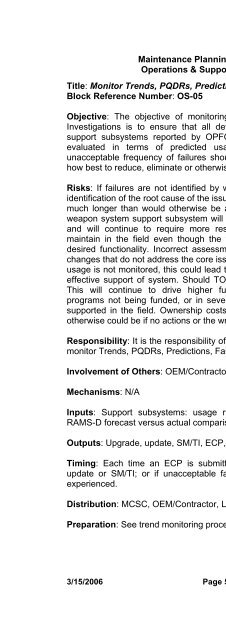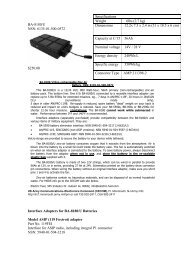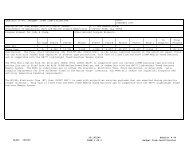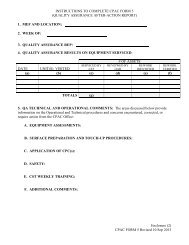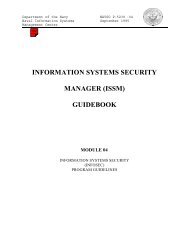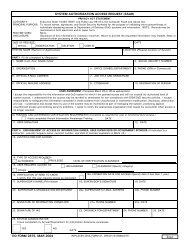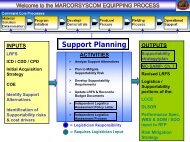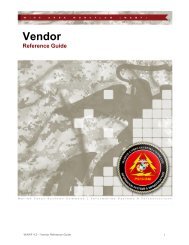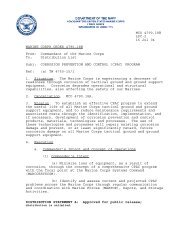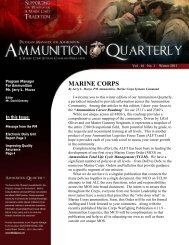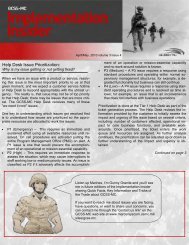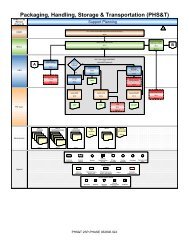Maintenance Planning Process - Marine Corps Systems Command
Maintenance Planning Process - Marine Corps Systems Command
Maintenance Planning Process - Marine Corps Systems Command
- No tags were found...
Create successful ePaper yourself
Turn your PDF publications into a flip-book with our unique Google optimized e-Paper software.
<strong>Maintenance</strong> <strong>Planning</strong> <strong>Process</strong> NarrativesOperations & Support Subsystem PhaseTitle: Monitor Trends, PQDRs, Predictions, and Failure InvestigationsBlock Reference Number: OS-05Objective: The objective of monitoring Trends, PQDRs, Predictions, FailureInvestigations is to ensure that all deficiencies of the fielded system and/orsupport subsystems reported by OPFORRES are completely and accuratelyevaluated in terms of predicted usage versus actual. Any abnormal orunacceptable frequency of failures should be further investigated to determinehow best to reduce, eliminate or otherwise mitigate the source problem.Risks: If failures are not identified by way of PQDRs, or are inaccurate in theidentification of the root cause of the issue, the problem(s) may go unattended formuch longer than would otherwise be acceptable. Any inefficient or ineffectiveweapon system support subsystem will continue to be source of field problems,and will continue to require more resources and funding than desirable tomaintain in the field even though the warfighter may not be able to use thedesired functionality. Incorrect assessment of the problems could also lead tochanges that do not address the core issues. If the predicted usage versus actualusage is not monitored, this could lead to a shortage of supply items needed foreffective support of system. Should TOC-R goals be set, they will not be met.This will continue to drive higher funding requirements resulting in otherprograms not being funded, or in severe cases, fewer weapon systems beingsupported in the field. Ownership costs will ultimately remain higher than theyotherwise could be if no actions or the wrong actions are taken.Responsibility: It is the responsibility of LOGCOM and Equipment Specialists tomonitor Trends, PQDRs, Predictions, Failure Reports and Failure Investigations.Involvement of Others: OEM/Contractor/PSI, OPFORRES, CASC.Mechanisms: N/AInputs: Support subsystems: usage reports, PQDRs, FRACAS reports andRAMS-D forecast versus actual comparisons.Outputs: Upgrade, update, SM/TI, ECP, or recommended solutions.Timing: Each time an ECP is submitted; prior to a scheduled or requestedupdate or SM/TI; or if unacceptable failure rates or too high O&S costs areexperienced.Distribution: MCSC, OEM/Contractor, LOGCOM (SCMC, DEPOT, DLA).Preparation: See trend monitoring procedures.3/15/2006 Page 5 of 24 Flowchart Control MPP V2.1


